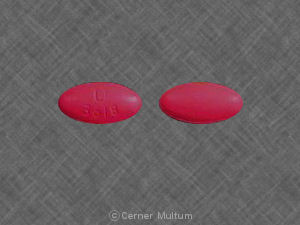Vantin and Alcohol/Food Interactions
There is 1 alcohol/food/lifestyle interaction with Vantin (cefpodoxime).
Cefpodoxime Food/Lifestyle
Moderate Food Interaction
ADJUST DOSING INTERVAL: Food enhances the oral bioavailability of cefpodoxime proxetil tablets. Following a 200 mg dose taken with food, the extent of absorption (mean AUC) was 21% to 33% higher and the mean peak plasma concentration (Cmax) 19% higher than under fasting conditions. Time to peak concentration (Tmax) was not significantly different between fed and fasted states. On the contrary, when a 200 mg dose of the suspension was taken with food, the mean AUC and Cmax were not significantly different than those under fasting conditions, although the rate of absorption was slower with food (48% increase in Tmax ).
MANAGEMENT: To ensure maximal oral absorption, cefpodoxime proxetil tablets should be administered with or immediately after a meal.
References (3)
- Hughes GS, Heald DL, Barker KB, et al. (1989) "The effects of gastric pH and food on the pharmacokinetics of a new oral cephalosporin, cefpodoxime proxetil." Clin Pharmacol Ther, 46, p. 674-85
- "Product Information. Vantin (cefpodoxime)." Pharmacia and Upjohn
- Borin MT, Driver MR, Forbes KK (1995) "Effect of timing of food on absorption of cefpodoxime proxetil." J Clin Pharmacol, 35, p. 505-9
Switch to consumer interaction data
Vantin drug interactions
There are 88 drug interactions with Vantin (cefpodoxime).
Vantin disease interactions
There are 5 disease interactions with Vantin (cefpodoxime) which include:
More about Vantin (cefpodoxime)
- Vantin consumer information
- Check interactions
- Compare alternatives
- Reviews (6)
- Drug images
- Side effects
- Dosage information
- During pregnancy
- Drug class: third generation cephalosporins
- Breastfeeding
Related treatment guides
Drug Interaction Classification
| Highly clinically significant. Avoid combinations; the risk of the interaction outweighs the benefit. | |
| Moderately clinically significant. Usually avoid combinations; use it only under special circumstances. | |
| Minimally clinically significant. Minimize risk; assess risk and consider an alternative drug, take steps to circumvent the interaction risk and/or institute a monitoring plan. | |
| No interaction information available. |
See also:
Further information
Always consult your healthcare provider to ensure the information displayed on this page applies to your personal circumstances.


